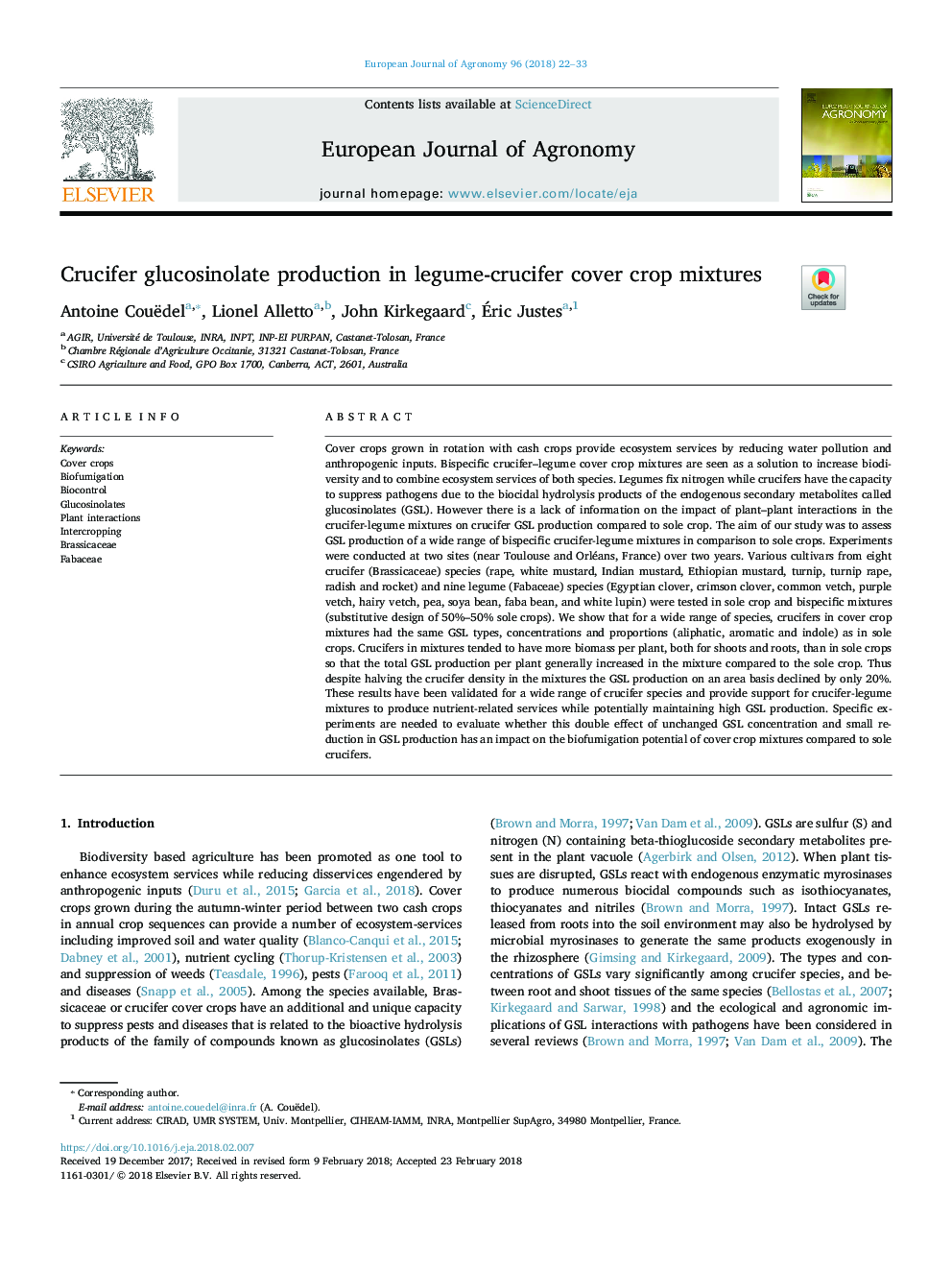| کد مقاله | کد نشریه | سال انتشار | مقاله انگلیسی | نسخه تمام متن |
|---|---|---|---|---|
| 8878899 | 1624428 | 2018 | 12 صفحه PDF | دانلود رایگان |
عنوان انگلیسی مقاله ISI
Crucifer glucosinolate production in legume-crucifer cover crop mixtures
ترجمه فارسی عنوان
تولید گلوکوزینولات کروسیفر در مخلوط های مخلوط کاهو و
دانلود مقاله + سفارش ترجمه
دانلود مقاله ISI انگلیسی
رایگان برای ایرانیان
کلمات کلیدی
موضوعات مرتبط
علوم زیستی و بیوفناوری
علوم کشاورزی و بیولوژیک
علوم زراعت و اصلاح نباتات
چکیده انگلیسی
Cover crops grown in rotation with cash crops provide ecosystem services by reducing water pollution and anthropogenic inputs. Bispecific crucifer-legume cover crop mixtures are seen as a solution to increase biodiversity and to combine ecosystem services of both species. Legumes fix nitrogen while crucifers have the capacity to suppress pathogens due to the biocidal hydrolysis products of the endogenous secondary metabolites called glucosinolates (GSL). However there is a lack of information on the impact of plant-plant interactions in the crucifer-legume mixtures on crucifer GSL production compared to sole crop. The aim of our study was to assess GSL production of a wide range of bispecific crucifer-legume mixtures in comparison to sole crops. Experiments were conducted at two sites (near Toulouse and Orléans, France) over two years. Various cultivars from eight crucifer (Brassicaceae) species (rape, white mustard, Indian mustard, Ethiopian mustard, turnip, turnip rape, radish and rocket) and nine legume (Fabaceae) species (Egyptian clover, crimson clover, common vetch, purple vetch, hairy vetch, pea, soya bean, faba bean, and white lupin) were tested in sole crop and bispecific mixtures (substitutive design of 50%-50% sole crops). We show that for a wide range of species, crucifers in cover crop mixtures had the same GSL types, concentrations and proportions (aliphatic, aromatic and indole) as in sole crops. Crucifers in mixtures tended to have more biomass per plant, both for shoots and roots, than in sole crops so that the total GSL production per plant generally increased in the mixture compared to the sole crop. Thus despite halving the crucifer density in the mixtures the GSL production on an area basis declined by only 20%. These results have been validated for a wide range of crucifer species and provide support for crucifer-legume mixtures to produce nutrient-related services while potentially maintaining high GSL production. Specific experiments are needed to evaluate whether this double effect of unchanged GSL concentration and small reduction in GSL production has an impact on the biofumigation potential of cover crop mixtures compared to sole crucifers.
ناشر
Database: Elsevier - ScienceDirect (ساینس دایرکت)
Journal: European Journal of Agronomy - Volume 96, May 2018, Pages 22-33
Journal: European Journal of Agronomy - Volume 96, May 2018, Pages 22-33
نویسندگان
Antoine Couëdel, Lionel Alletto, John Kirkegaard, Ãric Justes,
